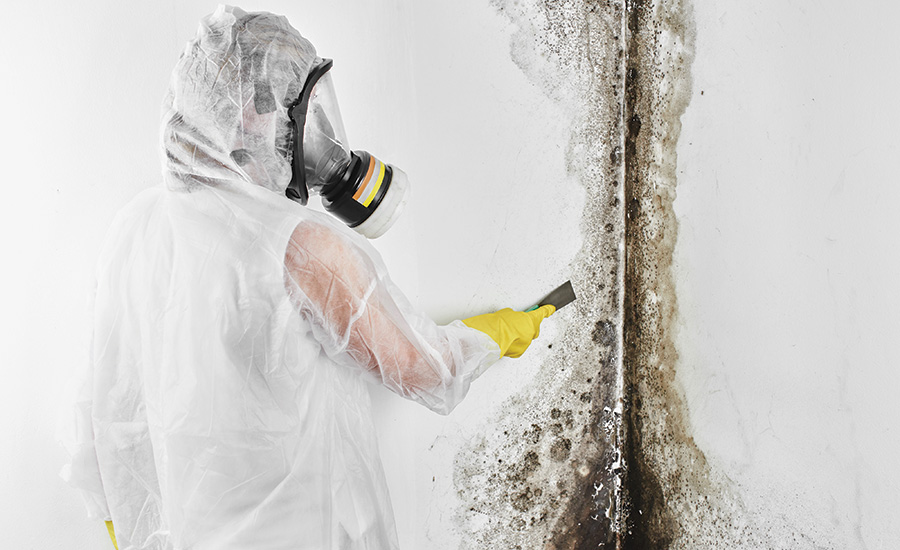My hat is off to the brave men and women on front lines battling the dreaded coronavirus during this global crisis.
Contractors are very sensitive to the liability exposure they face with contracts to address coronavirus contamination. At one end of the spectrum are contractors who abandon established policies of their businesses and embark on this work with no written agreement whatsoever.
In the other end of the spectrum are contractors who are so spooked about liability for COVID-19 claims that they put too many disclaimers in their contracts, not realizing that they could render their entire contract, including the disclaimers, unenforceable.
This column explains a pathway to a happy medium with a contract that provides broad but reasonable protection for the contractor but can pass muster in the inevitable litigation that will arise from these projects. This is a rapidly evolving situation, and due to the time it takes to bring this to press, some of the concepts stated here may be outdated, so keep an eye on the R&R website for updates as the events unfold.
One concept that will never become outdated is that the law requires mutual assent and consideration in order to form a contract. Mutual assent occurs when someone accepts an offer that has certain and definite terms. The offer need not contain every term, but must include enough of the essential terms so that a contract containing those terms is capable of enforcement.
A proposed contract is an offer. Offers must generally include the price to be paid, the subject matter of the contract, and the identity of the offeree.
“Consideration” is the exchange of one thing of value for another, and therein lies an important problem for contractors who are unable to confirm the efficacy of the work to address the coronavirus and are not armed with a strong contract that imposes a tangible duty on the contractor.
This is easier in other areas of restoration, such as mold, lead, or asbestos, where there are affordable means to prove that work was done. A contractor can photograph a moldy wall, remove the mold, and then take another photograph as evidence of the removal of visible mold.
Not so with the coronavirus.

Unlike mold, viruses are odorless and always invisible. As of this writing, there is no commercially-available testing to conclusively confirm that the virus has been completely removed from a building, or that the concentrations of the virus have been brought down to “acceptable concentrations,” because there are no such established levels. Customers may have zero tolerance for the coronavirus in their buildings, a goal which may be extremely difficult to affordably achieve with the current technology. Contractors would be well advised to have a candid conversation with their customers about the limitations of their services.
So what consideration is written into your coronavirus contract?
If the contract does not explicitly set forth a tangible value proposition for the customer, it may lack consideration. Without consideration, all the fancy liability disclaimers may be unenforceable, leaving the restorer naked of protection.
But careful contract drafting can avoid this problem and create a defensible contract that sets up an objectively fair transaction for both the contractor and the customer.
The typical restoration service contracts and work authorizations do not address the unique legal issues presented by the coronavirus and the risk of transmission of COVID-19. They do not explain, for example, that the benefits of the work may diminish or disappear as soon as the property is re-occupied, due to the significant risk of re-contamination. However, the contract still needs to impose enforceable obligations on the contractor, so this is a trap for the unwary.
Sadly, every catastrophe attracts charlatans. Good restorers must face the reality that scammers will prey on the frightened public, and take large amounts of money to confer little or no benefit on the customer. Even more sadly, scammers will get lots of media coverage that could taint the reputation of the industry as a whole. This will subject honest contractors to heightened scrutiny and unwarranted suspicion. Some of the finest lawyers in country will shine a bright light on restorers’ contracts, accusing them of fraud and other sins in an effort to free their clients of duty to pay for services. The contracts will take center stage in these disputes, and a hastily-prepared contract could be “Exhibit A” to prove the restorer preyed on the vulnerable during a state of emergency amid this global crisis.
A customer may be able to avoid paying for services if the court can be convinced that the contract was “illusory.” An illusory contract is an agreement in which one party gives as consideration a promise that is so insubstantial as to impose no obligation. Illusory contracts are unenforceable as a matter of public policy. Some examples help illustrate the point of when contracts are––and are not––considered illusory.
As we all know, insurers are experts at creating exclusions intended to free them of the obligation to pay policy benefits. Contractors have challenged these exclusions on grounds that they are so broad that they essentially defeat all of the coverage afforded under the policy, and are therefore illusory.
In the New York case Lend Lease Construction v. Zurich, the insured alleged that an exclusion in Zurich’s policy was so broad that it made the policy illusory. The loss occurred when Superstorm Sandy caused a crane to collapse during construction of the skyscraper commonly known as the “One57 building” in Manhattan. The Zurich policy covered “temporary works” subject to an exclusion for contractor’s “tools and equipment.” The insured argued that the crane was not a “tool” for purposes of the exclusion because parts of it were built to remain a permanent part of the structure, and that applying the “tool” exclusion to this claim would effectively defeat all potential coverage, making the policy illusory. The New York Court of Appeals disagreed, and found that the contract of insurance was not illusory because there was still coverage for things such as scaffolding, shoring and fences that are not “tools” within the meaning of the exclusion.

When the mold remediation industry launched in the 1990’s, contractors were fearful of lawsuits for mold-related illness. Many of them created homemade contracts that stated they were not liable for mold. If the scope is to remove mold, but the contractor is not responsible for mold, then the contractor has the choice to perform or not to perform, and the contracts were unenforceable illusory contracts. The same problem can occur with an overly-disclaimed Coronavirus Service Contract, unless the scope of work imposes a measurable obligation on the contractor.
Define the benefit of the bargain the customer can expect from you, choosing the words with extreme care. There is debate in the industry about how to describe the services provided by contractors in the coronavirus context. Is it “mitigation”? “Disinfection”? It is safer to promise “the application of disinfectant” than actual disinfection. The two are very different. “Sanitization”? Will the property really be sanitary when you are done? What about “cleaning”? “Clean” means “free of “pollution,” so it may be risky for contractors to call coronavirus work “cleaning” unless they can produce evidence that they removed pathogens from the environment.
Instead, it is best to focus the contract on the acts the contractor will perform, and to commit in writing to perform those acts in good faith and in a workmanlike manner. The contract should explain that the customer is buying a process, rather than a result. This is not unfair. Pest control operators do the same thing. There’s a reason they’re called pest “control” operators, rather than pest “elimination” operators. They promise to apply products, but not to eliminate all pests. Companies attacking the coronavirus can take a page from their playbook, and protect themselves with a contract that limits their liability without depriving the customer of a benefit of the bargain.
Make sure your contracts include a substantial promise that you can support. The world is counting on you to mitigate the risk of transmission of the deadly COVID-19 disease. You are truly in a position to save lives.
Be strong.
Be confident.
Keep going.
Disclaimer: This article is intended for general information purposes and is not intended to be legal advice. Legal issues should be presented to qualified counsel licensed to practice law in the jurisdiction where the events occurred.
1 https://law.justia.com/cases/new-york/court-of-appeals/2017/11.html


